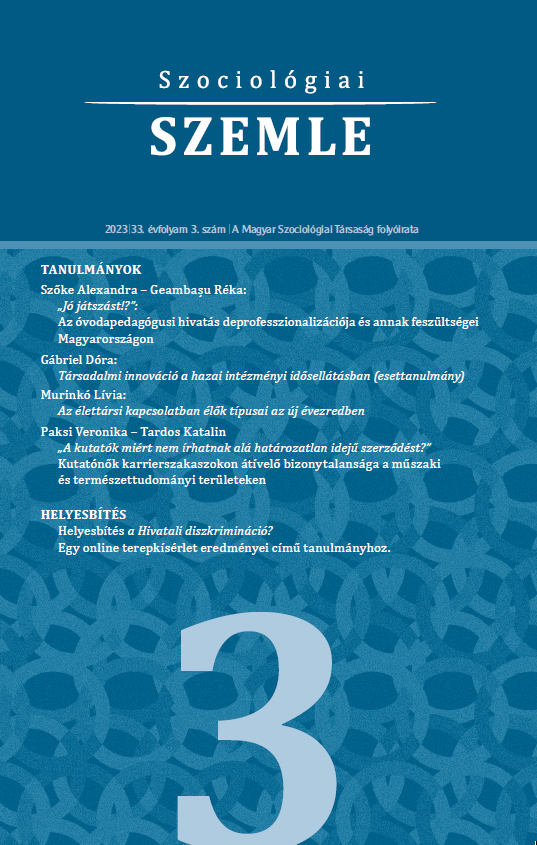Typologies of cohabitation in the new millennium
Abstract
An important element in the decade-long transformation of relationships is the rise of unmarried cohabitation, which has increased the diversity of couples’ family situations, trajectories and expectations, calling for a differentiated approach. The analysis aims to identify types, changes and characteristics of the cohabiting population aged 22–69, based on data from the first (2001) and fifth (2016/17) waves of the Turning Points of the Life Course panel survey (the Hungarian Generations and Gender Survey). In addition to relationship commitment and attitudes towards marriage, the main characteristics of family trajectories were also included in the grouping criteria. Using latent class analysis, four types were identified: trial marriage, alternative to marriage, mosaic family and post-marital cohabitation. Cohabiters in a trial marriage are the youngest, the most pro-marriage and the most advantaged socially. The share of the alternative to marriage type has increased and is characterised by socio-economic disadvantages. The proportion of long-term cohabitation after marriage, which is more common among middle-aged and elderly people, has decreased. We did not find groups who reject marriage, who are prevented from marrying by their poor financial situation, or who see their cohabitation as an alternative to being single, as reflected in international literature.





